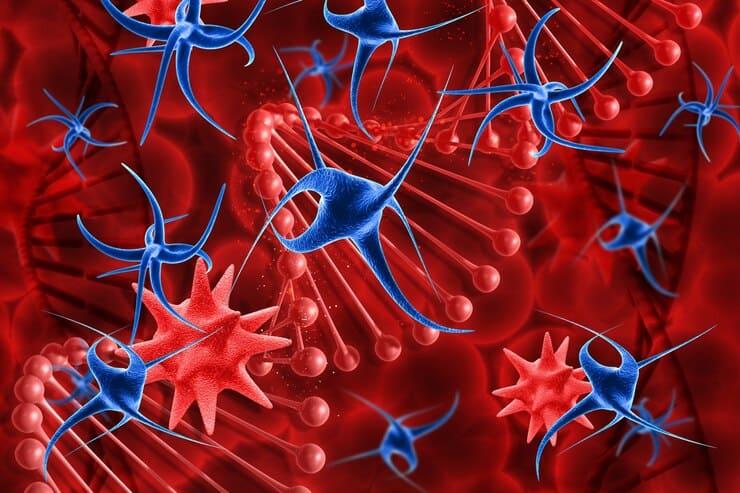KEY TAKEAWAYS
- The phase 3 study aimed to investigate the prophylactic efficacy and safety of telpegfilgrastim, in managing CIN.
- The primary endpoint was to determine grade 4 neutropenia in cycle 1.
- Researchers noticed that a single dose of telpegfilgrastim per cycle was tolerable and effective as multiple daily doses of rhG-CSF
Recombinant human granulocyte colony-stimulating factor (rhG-CSF) and its long-acting pegylated form (PEG-rhG-CSF) play crucial roles in managing chemotherapy-induced neutropenia (CIN).
Yuan-Kai Shi and his team aimed to focus on evaluating the efficacy and safety of telpegfilgrastim, a Y-shaped branched pegylated G-CSF, in the prophylaxis of CIN.
The study performed a randomized, open-label, positive drug-controlled phase III trial involving patients diagnosed with breast cancer (BC) or non-small cell lung cancer (NSCLC) who underwent 1-4 chemotherapy cycles spanning 21 days per cycle. Stratified by tumor type, patients were randomly assigned in a 1:1:1 ratio to receive either a single subcutaneous injection of 2 mg telpegfilgrastim (group 1), 33 μg/kg telpegfilgrastim (group 2), or positive drugs (control group) per cycle. In the control group, patients were administered daily rhG-CSF (Topneuter®) at 5 μg/kg during the first cycle, followed by the option to switch to PEG-rhG-CSF (Xinruibai®) at 6 mg or continue with the initial treatment from cycle 2-4
This analysis, involved 397 patients (BC, n=265; NSCLC, n=132), demonstrated that a single dose of 2 mg or 33 μg/kg telpegfilgrastim is non-inferior to rhG-CSF in terms of the duration of grade 4 neutropenia during cycle 1. The least square means of the difference with the control group in group 1 and group 2 showed no significant disparities. For BC, the differences were 0.097 (95% CI: -0.189, 0.383) and 0.217 (95% CI: -0.091, 0.524) days, and for NSCLC, -0.143 (95% CI: -0.349, 0.064) and -0.059 (95% CI: -0.264, 0.146) days, respectively. No notable differences were observed in secondary efficacy and safety endpoints between the telpegfilgrastim-treated group and the control group. The average exposure per cycle of telpegfilgrastim closely resembled the cumulative exposure per cycle of rhG-CSF and was 1/3 of the exposure dose of PEG-rhG-CSF.
The study concluded that a single dose of 2 mg or 33 μg/kg telpegfilgrastim per cycle is both tolerable and effective, comparable to multiple daily doses of rhG-CSF and a single dose of PEG-rhG-CSF in the prophylactic therapy of CIN. Notably, telpegfilgrastim administered at a fixed single dose of 2 mg emerges as a potentially more convenient mode of administration.
The study is sponsored by Xiamen Amoytop Biotech Co., Ltd.
Source: https://cslide.ctimeetingtech.com/asia2023/attendee/confcal/show/session/78
Clinical Trial: https://clinicaltrials.gov/study/NCT04466137
Shi Y K, Zhang Q, Wang X, et al. (2023).”The prophylactic efficacy of telpegfilgrastim, a Y-shape branched pegylated G-CSF in patient with chemotherapy-induced neutropenia: A multicenter, randomized phase III study”. Presented at ESMO ASIA 2023 (Abstract 441P)



